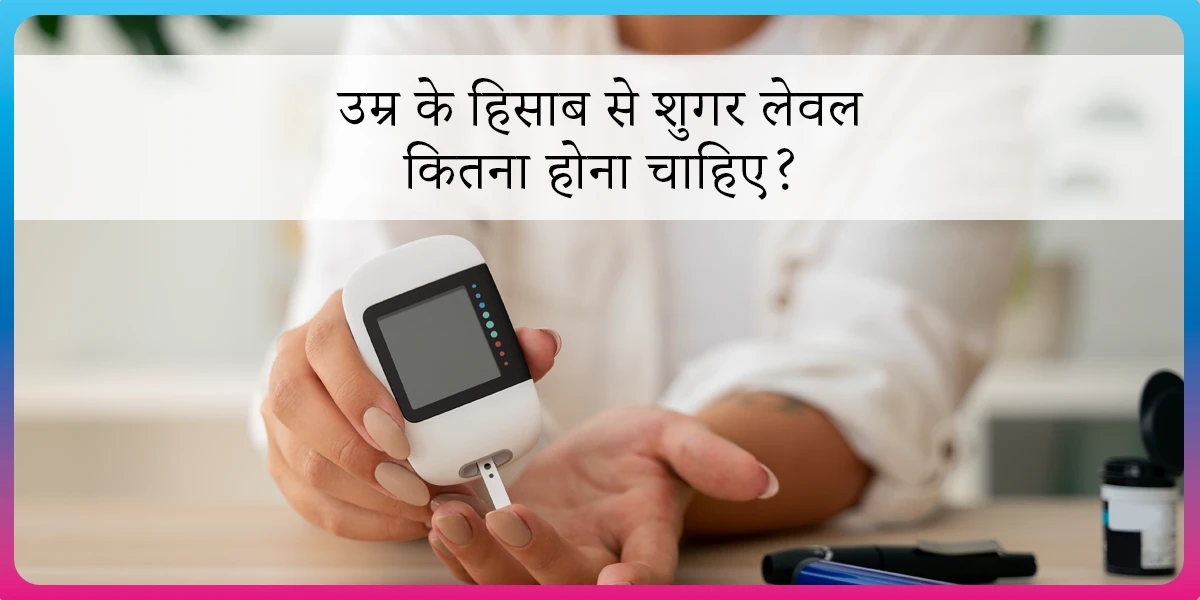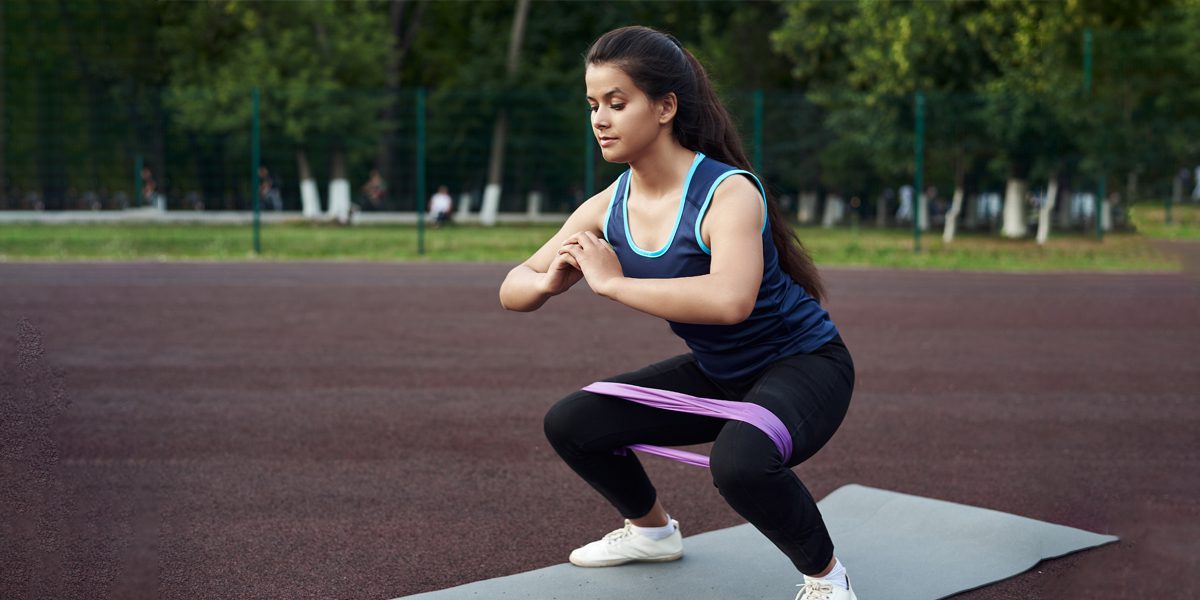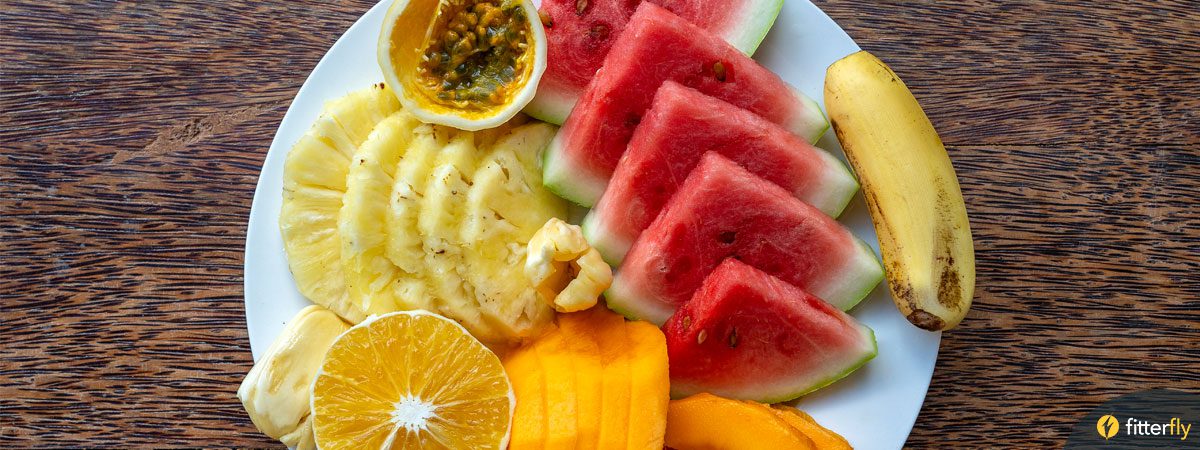The Ultimate List of Fiber-Rich Foods for Weight Loss
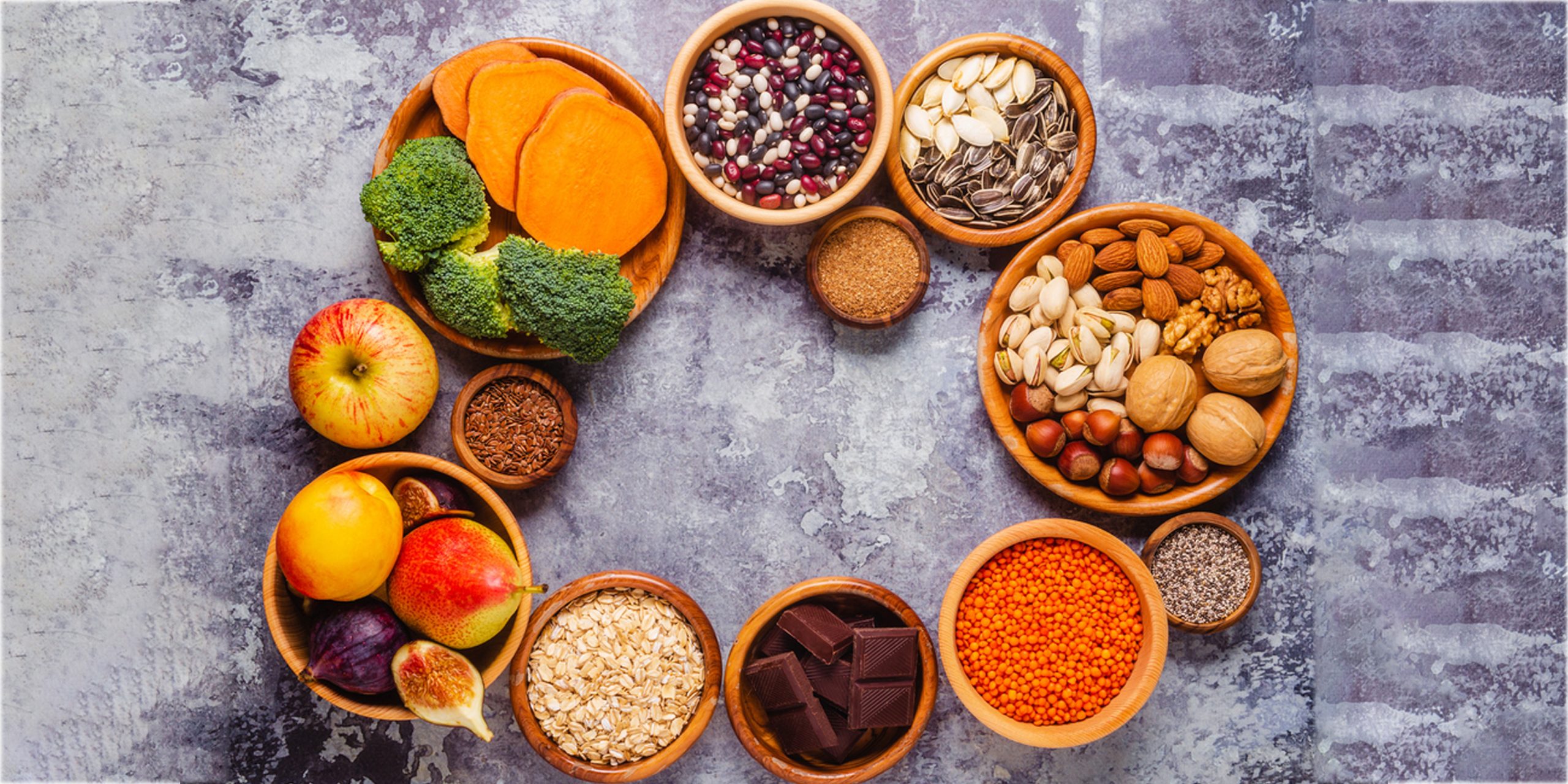
If you are looking to lose weight, you are surely one of the millions worldwide who are trying to do so! But kudos to you because getting to a healthy weight and maintaining it is vital to prevent heart disease, diabetes, and some cancers and for overall health and well-being!
While there are several fad diets and workouts that are popular weight loss measures, there are no shortcuts! Infact, weight loss programs must be tailor-made for each individual as we are all different!
Every weight loss plan includes the following:
- Dietary or nutrition plan
- Fitness and workout plan
- Stress management
Talking of nutrition, one nutrient group that is beneficial for weight loss is fibre. We’ve got you the ultimate list of fibre-rich foods for weight loss in this blog! Let’s get fibre exploring!
Fibre and Weight Loss: What’s the Link?
Fibre is a type of carbohydrate and is abundant in plant-based foods. Based on their reaction with water, fibre is of two types:
- Soluble: This fibre type dissolves in water. It helps slow down digestion.
- Insoluble: As the name suggests, this fibre does not dissolve in water. This type of fibre increases a sense of fullness and reduces hunger, and prevents digestive issues like constipation.
Is your weight increasing your health riskHealthy Weight
Calculator
Both types of fibre offer health benefits. When soluble fibre mixes with water, it forms viscous gel. This slows down digestion, keeping you full for longer. As a result, you are likely to eat less. Eating less means lesser consumption of calories and resultant weight loss.
Consuming fibre also improves your gut bacteria, which contributes to better digestion, health and overall well-being.
Several studies have shown that dietary fibre intake, regardless of caloric and macronutrient intake, promotes weight loss. Besides weight loss, consuming fibre also improves blood sugar control, maintains healthy blood cholesterol levels and reduces the risk of cardiovascular diseases.
Importance of Fiber in a Weight Loss Diet
Fiber is crucial in weight loss diets because it helps keep you full longer, reducing the overall calorie intake without feeling hungry. It slows down digestion, stabilizes blood sugar levels, and prevents rapid spikes in hunger.
Additionally, fiber rich foods typically require more chewing, thus slowing down eating and improving satiety. It also aids in digestion and regular bowel movements, contributing to overall gut health.
Benefits of High-Fiber Foods for Weight Loss
- Enhanced Satiety: Fiber expands in the stomach and absorbs water, making you feel full.
- Calorie Control: High-fiber foods are often lower in calories and prevent overeating.
- Blood Sugar Regulation: Fiber moderates blood sugar levels, reducing the likelihood of insulin spikes.
- Digestive Health: Fiber helps maintain bowel health and regularity.
- Nutrient-rich: High-fiber foods are typically rich in essential nutrients contributing to overall health.
The Ultimate List of Fibre-Rich Foods for Weight Loss
Here’s your ultimate list of fibre-rich foods for weight loss that is not just easily available in India but also versatile to include in your weight loss diet plan!
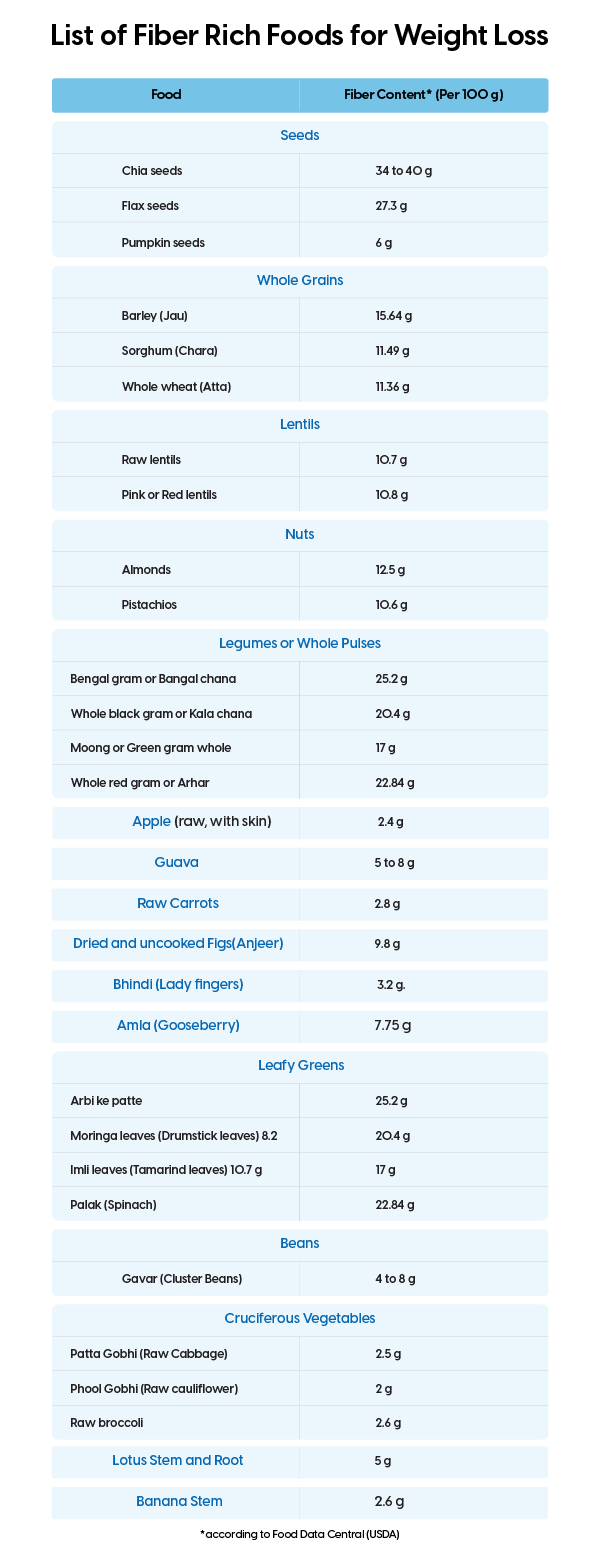
1) Apples
Think of fruits and apples, and pears are some of the best sources of fibre.
Apples, raw, with skin, contain approximately 2.4 g of total dietary fiber per serving (100 g).
When eaten whole, both these fruits provide soluble and insoluble fibre. You can eat them for breakfast or as a mid-meal snack.
2) Guava
Guavas, the pink and white variant, are both excellent sources of fibre. 100 g of guava can contain between 5 to 8 g of total dietary fibre, making them a great fruit to include in your weight loss diet. Eating just one guava can give you as much as 12% of your recommended daily dietary fibre intake.
3) Lentils
Lentils or dals are an integral part of every Indian meal. Did you know lentils are excellent sources of fibre, proteins, and minerals like manganese, potassium and iron?
Raw lentils have about 10.7 g of total dietary fiber per 100 g. Pink or red lentils, on the other hand, contain approximately 10.8 g of dietary fiber per 100 g.
Besides making different types of dals, lentils can be added to salads and vegetable stir-fries and to prepare dal or lentil soup, rasam and sambhar.
4) Legumes or Whole pulses
Legumes like black beans (kale sem), black-eyed peas (lobia), chickpeas (chana and chole), etc., are excellent sources of proteins and dietary fibre. L
egumes are versatile foods that can be added to dals, cooked as sabzi, or tossed in salads. They are an excellent way to make sumptuous and filling meals while managing your weight.
Bengal gram or Bangal chana (25.2g total fibre per 100 g), whole black gram or kala chana (20.4 g total fibre per 100 g), moong or green gram whole (17 g total fibre per 100 g) and whole red gram or arhar (22.84 g total fibre per 100 g) are some fibre-packed legumes to include in your weight loss meal plans!
Lost 11 kg in 3 months with… Fitterfly’s easy diet plan


66kg
Happy members
EMI
Guarantee
4.8/5
Weight Loss Program
5) Carrots
Raw carrots contain approximately 2.8 g of total dietary fiber per 100 g. Carrots are rich in vitamins A, C and K, magnesium, potassium and lots of dietary fibre. Consuming raw carrots in salads, vegetable bhaji, in breakfast items like upma and poha is a great way to up your fibre intake.
6) Nuts (almonds, pistachios)
Nuts are wonderful foods to eat if you are looking to lose weight. They are rich in fibre that boosts metabolism, reduces absorption, and increases satiety levels- all of which contribute to effective weight management and prevent a spike in your blood sugar levels.
Nuts like almonds and pistachios can be added to your morning cereals, salads and soups to incorporate their fibre content into your diet.
A 30-gram serving of almonds provides about 12.5 g of fiber per 100 g, whereas pistachios contain 10.6 g of fiber per 100 g.
7) Seeds (chia seeds, pumpkin seeds, sunflower seeds)
Just like nuts, chia, flax, pumpkin and sunflower seeds are loaded with healthy fats and dietary fibres. This fibre helps bulk up stools, increases satiety levels and makes you eat less.
Add these seeds to your cereals, soups, salads or stir-fries to get your daily dose of fibre. Flax seed powder is also an excellent way to use the seeds’ fibre content for weight loss.
China seeds contain approximately 34 to 40 g of dietary fiber per 100 g of seeds. Flax seeds contain approximately 27.3 g of total dietary fiber per 100 g of seeds and pumpkin seeds contain 6 g of dietary fiber per 100 g of seeds.
8) Whole grains
Whole grains are an excellent source of dietary fibre. A few whole grains that you can add to your meals are millet, barley (jau), sorghum (chara), and amaranth (kuttu). Grains like barley (15.64 g of total fibre per 100 g), bajra (11.49 g of fibre per 100 g) and whole wheat (atta) (11.36 g of fibre per 100 g) are some of the richest sources of fibre.
Besides high fibre content, these grains are a rich source of vitamins and minerals, making them wholesome, highly satisfying parts of your daily meals. Including whole grains in your diet is great for losing weight.
9) Figs (anjeer)
A versatile fruit that can be eaten fresh and dry, figs are sweet and have a granular texture. Figs or anjeers are rich in fibre and other nutrients like Vitamins A and K, protein and folate.
Dried and uncooked figs contain about 9.8 g of dietary fiber per 100 g.
Enjoy the figs fresh as part of your breakfast, or add them to a lunch salad as part of your weight loss diet.
10) Okra/Lady Finger (bhindi)
Okra, or ladies’ finger, is a common and versatile vegetable consumed all over India. This green vegetable is rich in vitamins A, C, and K, folate, potassium, calcium and magnesium.
Raw lady fingers contain approximately 3.2 g of fiber per 100 g.
When cooked the right way, okra is tasty and nutritious. Besides causing weight loss, okra is also good for better blood sugar levels.
Though it contains a moderate amount of fibre (4 g total fibre per 100 g portion), the mucilage or gel-like structure that the fibre forms in the okra helps slow down digestion and enable weight loss.
11) Amla (gooseberry)
Gooseberry or popularly called amla, is a rich source of vitamin C and fibre. 100 g of amla contains 7.75 g of total dietary fibre, giving you high satiety values, suppressing hunger pangs and assisting your weight loss journey.
It is, however, important to avoid preparing amla as marmalade or in dishes with added sugar as it increases the caloric value of the fruit.
12) Leafy greens
Leafy greens are nutrient-packed foods that are a must in every diet- whether you are looking to lose weight, manage your blood sugar levels or eat a healthy balanced diet. While leafy greens like spinach contain fibre, their content may be lesser than that of other foods like whole grains and seeds.
Arbi ke patte (5.6 g of fibre per 100 g portion), drumstick leaves (8.2 g per 100 g portion), and tamarind leaves (10.7 g total fibre per 100 g portion) are some sources of fibre.
13) Beans
Popular vegetables French beans, gavar and others from the bean family are loaded with fibre. These beans contain anything between 4 to 8 g of fibre per 100 g portions, making them a great food for a weight loss diet.
They are routinely used in India to make upma, poha, sabzi, gravies, pulav, and biryanis. They can also be added to noodles and pasta preparations for added crunch and flavour.
14) Cruciferous vegetables
Another group of vegetables that contain moderate amounts of fibre are cruciferous vegetables like cabbage, cauliflower and broccoli. Including a few cups of cruciferous vegetables in your daily diet can increase your fibre intake and help you manage your weight effectively.
- Raw Cabbage: Contains approximately 2.5 g of total dietary fiber per 100 g.
- Cooked Cabbage (boiled, drained, without salt): Provides around 1.9 g of total dietary fiber per 100 g.
- Raw cauliflower contains approximately 2 g of total dietary fiber per 100 g, while cooked cauliflower has slightly more at 2.3 g per 100 g.
- Raw broccoli contains approximately 2.6 g of dietary fiber per 100 g of serving.
- Cooked broccoli, when boiled and drained without salt, still retains a decent amount of fiber. It contains approximately 3.3 g of dietary fiber per 100 g of serving.
These vegetables are easily available and versatile. They can be added to stir-fries, gravies, salads, soups, and rice preparations.
15) Lotus stem and root
Popular in some regions of the country, lotus stems and root is used to prepare sabzi, and achars or just added to oriental preparations. These parts of the lotus stem are considered to be good sources of fibre, and the 100 g portion contains around 5 g of fibre.
16) Banana stem and flower
Banana steam and flower are considered a delicacy in the country’s southern parts. Besides being exceptionally flavourful, the banana plant’s stem and flower are rich in fibre.
Banana stem is a dietary fiber source, containing about 2.6 g of fiber per 100 g of raw banana stem.
So, if you want to add elaborate and fancy meals during your weight loss journey, don’t forget to use the banana stem and flower in your recipes.
Tips for Incorporating High-Fiber Foods
1. Start Slowly: Gradually increase fiber intake to prevent digestive discomfort.
2. Variety is Key: Include a variety of fruits, vegetables, whole grains, legumes, nuts, and seeds.
3. Read Labels: Choose foods with high fiber content when grocery shopping.
4. Snack Wisely: Opt for fiber-rich snacks like nuts, seeds, or fruits.
5. Stay Hydrated: Drink plenty of water to aid fiber digestion and prevent constipation.
Few Delicious and Fiber-Rich Recipes
1. Vegetable Stir-Fry with Brown Rice: Stir-fry a mix of colorful vegetables and serve with brown rice.
2. Lentil Soup: A hearty soup made with lentils, carrots, onions, and celery, seasoned to taste.
3. Mixed Vegetable Oats Upma: Roast oats, sauté vegetables with mustard seeds, curry leaves, and spices. Combine with oats and water, cook until done.
4. Moong Dal Chila (Lentil Crepes): Make a batter from ground moong dal. Add chopped vegetables and spices. Cook like thin pancakes on a hot pan.
5. Chickpea Salad: Toss boiled chickpeas with diced cucumber, tomatoes, onions, spices, and lemon juice dressing.
6. Spinach and Toor Dal: Cook toor dal, sauté with mustard, cumin, onions, garlic, add spinach and cook until wilted.
7. Barley Khichdi: Pressure cook barley, moong dal, and vegetables with turmeric and cumin seeds until soft.
Precautions and Considerations
1. Increase Gradually: Rapidly increasing fiber can lead to bloating, gas, or constipation.
2. Water Intake: High fiber diets need to be accompanied by adequate water to aid digestion.
3. Balance: Ensure a balanced diet; don’t focus solely on fiber at the expense of other nutrients.
4. Individual Tolerance: Be mindful of personal digestive tolerance to different fiber sources.
5. Consultation: Those with digestive disorders should consult a healthcare provider before major dietary changes.
FitterTake!
Achieving and maintaining a healthy weight is crucial for overall well-being and reducing the risk of various diseases. While there are no shortcuts to weight loss, incorporating a well-designed weight loss program can be highly beneficial.
One such program is offered by Brand Fitterfly, which focuses on personalized plans tailored to individual needs.
The advantages of the Fitterfly Weight Loss program are numerous. Firstly, it emphasizes the importance of a balanced and nutritious diet, which includes fiber-rich foods. Fiber plays a significant role in weight loss by promoting a feeling of fullness, reducing hunger, and regulating digestion.
It also improves gut health and contributes to overall well-being. The program also focuses on sleep & stress management and fitness- ensuring a holistic approach to weight loss and overall well-being.
Remember, losing weight is a journey that requires commitment and dedication. With the support of the Fitterfly Weight Loss program and the inclusion of fiber-rich foods in your diet, you can take significant steps towards achieving your weight loss goals and enjoying a healthier lifestyle.
Talk to our Program Advisor to know more or just give us a missed call at 08068507599, and we will definitely get back to you.
This blog provides general information for educational and informational purposes only and shouldn't be seen as professional advice.
Frequently Asked Questions
How does incorporating high-fiber foods aid in weight loss?
High-fiber foods increase satiety, reduce overall calorie intake by slowing down digestion, and help regulate blood sugar levels.
What are the main types of dietary fiber and their benefits?
Soluble fiber (found in oats, nuts, beans) helps lower cholesterol and regulate blood sugar. Insoluble fiber (found in whole grains, vegetables) aids in digestion and preventing constipation.
Can you provide a list of fruits high in fiber for weight loss?
Berries, apples, pears, oranges, and bananas are some fruits high in fiber and are beneficial for weight loss.
What vegetables are recommended for their high fiber content?
French beans, ladyfinger, cauliflower, carrots, radish, sprouts, and leafy greens like spinach and kale are high in fiber.
How do whole grains contribute to a high-fiber weight loss diet?
Whole grains like brown rice, millet, and whole wheat contain more fiber than refined grains, promoting fullness and reducing calorie intake.
Which legumes are best for weight loss due to their fiber content?
Lentils (black masoor), black beans (chana), chickpeas, and kidney beans (rajma) are fiber-rich legumes great for weight loss.
What are some nuts and seeds that are rich in fiber for weight loss?
Almonds, chia seeds, flaxseeds, and sunflower seeds are good options for fiber-rich nuts and seeds.
Are there specific meal plans that incorporate high-fiber foods for weight loss?
Many weight loss meal plans emphasize fruits, vegetables, whole grains, and legumes, focusing on increasing daily fiber intake.
What are the recipes focusing on high-fiber ingredients for weight loss?
Look for recipes that include whole grains, legumes, nuts, and plenty of vegetables and fruits. Salads, stews, and whole-grain-based dishes are excellent choices.
How can individuals gradually increase their fiber intake without digestive issues?
Increase fiber gradually, drink plenty of water, and balance fiber intake throughout the day and exercise (atleast walk) to avoid digestive discomfort.
Are there precautions or considerations when consuming high-fiber foods?
Start slowly to prevent bloating, drink plenty of water, and consider potential allergies or intolerances.
Can a high-fiber diet contribute to dehydration, and how can it be prevented?
High fiber absorbs water, so increase fluid intake to prevent dehydration.
What role do fiber supplements play, and when might they be recommended?
Supplements can help increase fiber intake when dietary changes are insufficient or for specific health conditions, as advised by a healthcare provider.
Can high-fiber foods be enjoyed by individuals with dietary restrictions or allergies?
Yes, with a variety of fiber sources available, individuals can choose those that fit their dietary needs and restrictions.
How long does it typically take to see weight loss results from a high-fiber diet?
Weight loss can vary, but improvements in digestion and satiety can be noticed within a few weeks, with gradual weight loss over time as part of a balanced diet and exercise routine.










